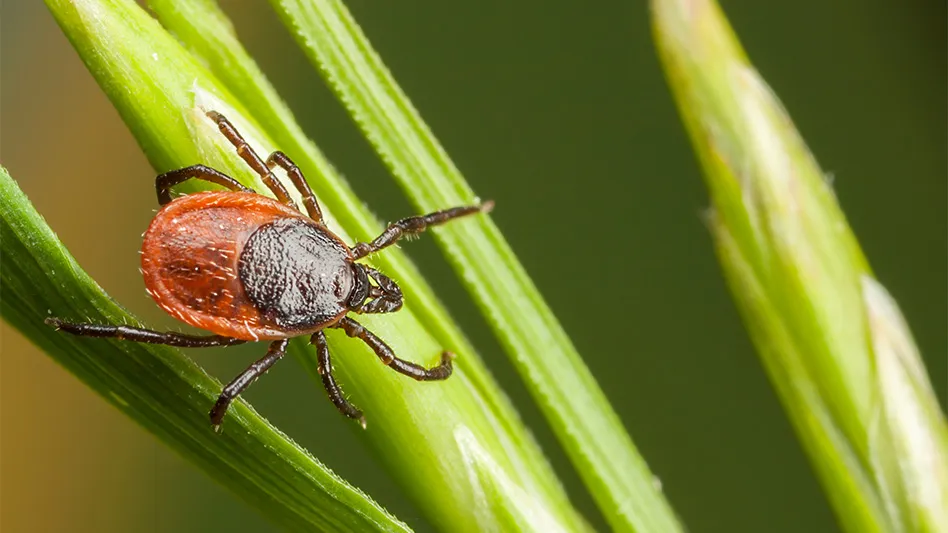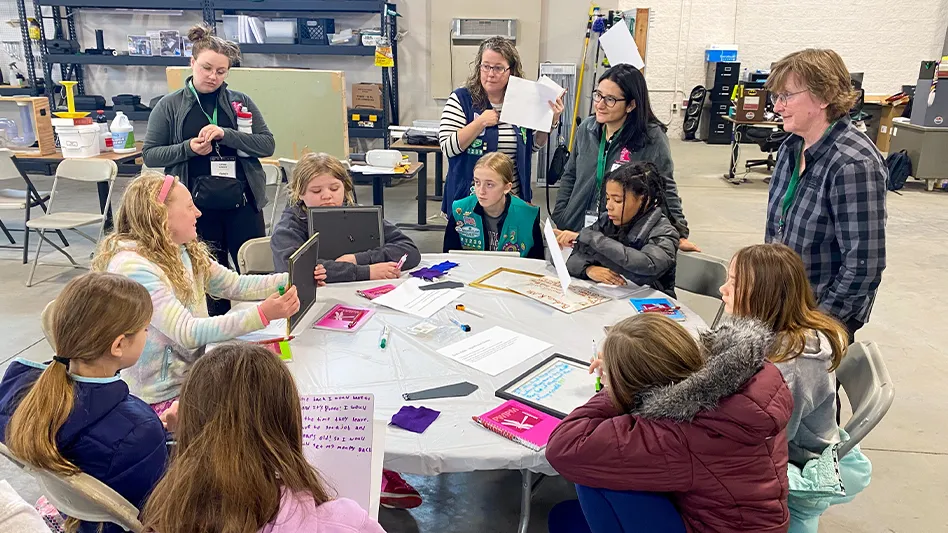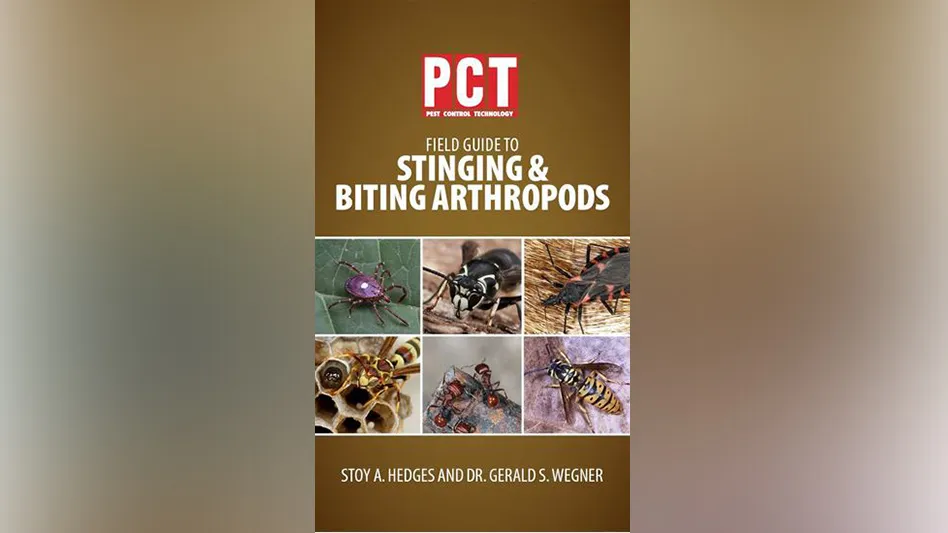
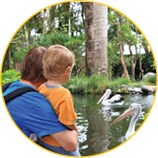
Editor’s Note: Copesan Services and PCT magazine joined forces to publish The PCT Guide to Commercial Pest Management. In the latest excerpt from this popular book, two of the industry’s leading technical directors examine how to perform pest management in zoos and aquariums.
Zoos and aquariums are particularly challenging because they typically have an abundance of food, water, harborage and ideal temperatures for pest development. Since a zoo can be a “pest paradise,” pest management is a critical component of protecting its animals and visitors from injurious pests. Despite the fact that pests may be harmful, technicians also must be attentive to protecting the zoo animals from the pest management tools used in service. Some of the animals may be endangered or protected species, which can be of added concern.
Certain animals, such as primates, may be extremely talented at accessing products placed for pest management. Small animals with low body weights (birds, small rodents, reptiles, etc.) may be more susceptible to pesticide products, and because of their small size, they may be capable of accessing pesticides even when placed in containerized stations. Even non-chemical pest control methods, such as snap traps, can pose a hazard to some zoo animals.
It is extremely important that the PMP work closely with zoo staff in determining acceptable pest management strategies for each area and target pest. A written plan must be developed as part of the contract process and agreed upon by zoo veterinarians prior to the start of service. Animal curators should be consulted regarding material placement and capabilities of animals housed in each covered treatment site. A strong knowledge of “least toxic” tools, types of pests common in zoos and creativity in pest management solutions are all required skills of PMPs working in zoos.
FINDING PESTS IN ZOOS. Zoos provide numerous resources for pests. In satisfying the survival needs of the zoo animals, the zoo environment also provides for pest survival and, often, chronic infestation. Tropical animals, for example, require environments with high temperatures and high humidity, which are ideal environmental conditions for pests like German cockroaches. In this article, we will deal with the conditions that encourage pests and other special challenges relating to the servicing of zoos.
Water. Water sources are abundant in zoos and aquariums, and they are possibly the most difficult resource to reduce as part of an Integrated Pest Management strategy. Water may be present as part of an aquatic animal habitat or may be present for animals to drink, and it may be used as part of public exhibits for aesthetics. Many animal displays will include plants as well as animals, and the plants must be watered. Water in moats or man-made streams may be used as barriers to keep animals within a particular area while maintaining the appeal of a “natural” setting.
In aquariums, moisture and high humidity can be issues in the behind-the-scene areas where tank access is provided, and contribute to pest problems. Although it may be difficult to reduce water or moisture available to pests in these environments, it is important to be aware of the impact that this resource can have on pest populations. Inspect and monitor these areas carefully, and always look for ways to reduce the potential for pest access to moisture.
Water also is an essential component in keeping zoo exhibit and animal-holding areas clean. Large quantities of water may be used to wash surfaces to help remove food and animal wastes. Over time, power washing can damage walls and leave organic debris and moisture in cracks and crevices where it may remain for long periods of time. Technicians should discuss options for reducing water availability and drying of any standing water. Fans may be an option to reduce moisture in animal-holding areas, and floor and wall surfaces should be designed to accommodate the heavy amounts of water used. Recommendations should be made for sealing areas damaged or deteriorated by water.
Food. Because zoos have a wide variety of animals on site, the foods stored and used at the facility are just as varied. Examples of foods typically prepared at zoos for animals include crickets and other insects, fruits, vegetables, pelletized feeds and grains, and meats. In addition, a wide array of food choices are prepared and served to visitors and staff at restaurants and concession stands.
Food may be left out 24/7 for finicky zoo animals. However, if possible, food should be placed out only during regular feeding times. Food never should be left out in exhibit areas in which animals are moved to a holding area at night. If food dishes must be left out for any reason, encourage the zoo staff to look at ways of modifying feeding dishes to discourage pest access while allowing exhibit animals to feed. For example, placing dishes on specially designed pedestals with feeding platforms can be effective in discouraging rodents in aviaries. Repellents or compounds which make surfaces slick should be explored to keep ants out of feeding dishes.
In food storage areas, all stored feeds and foods should be kept in sealed containers. All food should be inspected for signs of pests before it is accepted at the point of delivery, since stored product pests can make their way into a site from the food distribution warehouse. The zoo staff should incorporate a first-in, first-out (FIFO) system of stock rotation to keep storage or use of old/older products to a minimum. Young zoo animals or animals on loan may have different dietary requirements, and when a food is no longer needed, it should be discarded rather than left in storage.
Food wastes also should be properly handled. All exterior garbage receptacles should have closed lids—preferably self-closing — and refuse containers should be resistant to pest access.
Shelter. Pest harborage may be found in everything from the decorative wall coverings in public areas to behind-the-scenes animal housing. To enhance the zoo experience for visitors, exhibits are often developed with native habitat themes. The materials used in construction of these displays typically involve natural items like wood, rock, plants and soil. These materials provide numerous harborage sites for various pests.
Atrium areas with soil, rocks and plants can be ideal habitats for ants. Layered bamboo panels or wooden boards on walls or walkways can provide numerous cracks and crevices for cockroaches to harbor. Gunite is another common construction material found in zoos and aquariums. This material is used to create the look of rocks using cement and wire. Typically, there are numerous cracks and crevices in the rock design and voids behind the rock. Pests like cockroaches, rodents and ants can easily take up harborage in the cracks and voids of gunite.
Non-public areas can have con-struction-design issues as well. Hollow-block concrete walls are a common construction material that can provide voids for pests. Cage supports may be hollow metal or wood, providing voids or preferred substrates for pests like German cockroaches.
Zoos can be subject to some unique pest pressures from incoming materials used in exhibits. Pests may be brought into zoo buildings on plants, wooden branches and other items used as accessories or animal enrichment in exhibits. Zoos have a quarantine procedure for new animals, but they rarely have the facilities for the quarantine of plants. Thorough inspections of all items coming into the zoo are required to help prevent pest entry.
Pests like red imported fire ants, Caribbean crazy ants and ghost ants have made their way into zoos on horticultural nursery stock. Other examples of pests imported into zoo and aquarium buildings on landscaping materials include wood-boring beetles, carpenter ants, fire ants, ghost ants and ornamental plant pests like scales and aphids that may then support ant development and survival.
Warmth. Follow the warmth when looking for pests at zoos. Indoor aviaries and other buildings that house tropical animals will have temperatures that are attractive to pests, such as German cockroaches and Pharaoh ants. Check areas around lights in aquariums and zoo exhibits for pests, since lights can provide added warmth for pest development.
Location. Zoos often are located in park areas where pressures from animals in the natural setting may provide a constant influx of new pests. Wildlife such as raccoons, foxes, feral cats, dogs and even deer may enter zoos. In addition to concerns of depredation of zoo animals by wild carnivores, many of these animals can spread diseases such as toxoplasmosis, rabies, chronic wasting disease and parvovirus. These animals also can spread parasites. Urban bird pests, such as pigeons and sparrows, can spread avian diseases. Commensal rodents can spread a variety of diseases, such as leptospirosis and salmonellosis, in addition to contaminating and feeding on zoo animal feed and food.
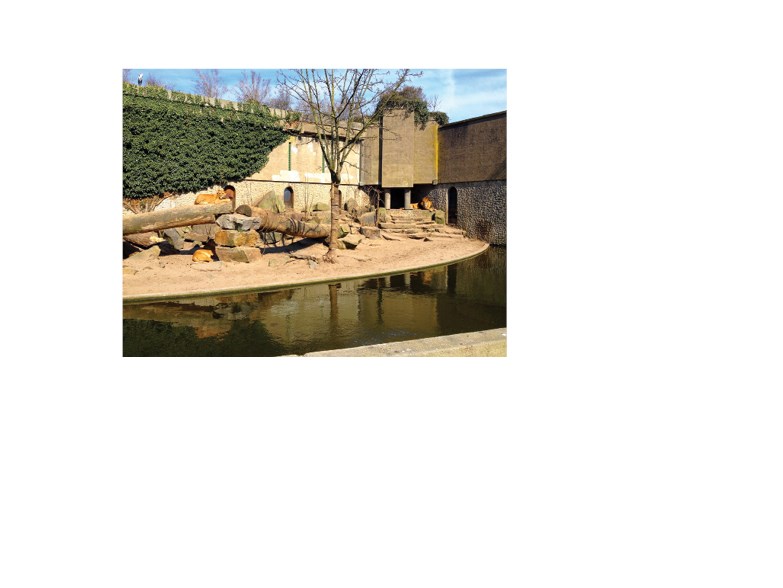
STAFF CONCERNS. There are special considerations regarding the sensitivity of zoo staff to pest management measures. Staff take the guardianship of animals very seriously and do not want to do anything to compromise the safety and health of these animals. Keepers may be reluctant to allow certain treatment procedures because of the risks they could pose to the animals.
It is important to develop a strong communication program with zoo staff to build a trusting relationship; establishing thresholds of acceptable pest population sizes also is useful. The zoo staff may elect to tolerate certain numbers of nuisance pests in certain areas rather than implement control. Determining tolerance levels and thresholds can help accommodate the zookeeper’s concerns regarding unnecessary treatments.
Keepers also may be sensitive to the humane treatment of pests during the control process. Some zoos may restrict the use of tools like sticky boards due to humaneness of kill. For this reason, it is important to discuss the use of different types of traps prior to the start of the service program.
SAFETY COMES FIRST. The PMP may be required to undergo certain medical testing or vaccinations before servicing a zoo. These requirements should be discussed with zoo administration prior to the start of service. Tuberculosis testing is a common requirement, but there may be others. This is for the protection of the animals as well as the technician.
In addition, the PMP may need to follow specific procedures to avoid carrying potentially harmful disease-causing organisms on his or her shoes or clothing from one exhibit area to another. The use of sanitizing foot baths as a means of containing the spread of disease on shoes is a common practice in zoos. Pest management staff must comply with zoo policies in this regard. As a general rule, practice good hygiene in handwashing and use of gloves when servicing.
The zoo also may have policies against the movement of equipment from one exhibit area to another to prevent diseases from being transported on the equipment. Guidelines regarding the movement of equipment from one exhibit space to another should be established prior to the start of service.
PMPs are present to protect zoo animals from pests, but in some instances they may need to protect themselves from zoo animals. It is important to be aware of the hazards in each of the service areas. In some zoos, a keeper will accompany the technician at all times. In other zoos, the technician may be escorted only when entering specific areas. It is important to know the proper safety procedures to follow in all animal areas, especially if servicing these without an escort.
Ask zookeepers about potential hazards in the areas you are to service. It is important to know the reach of animals when working in caged environments, and there may be certain noises or behaviors to avoid in certain exhibits. Even animals that seem relatively harmless may have quirks in their behavior which can cause problems. One example is that of a parrot that does not like to be talked to and bites his keepers when approached. Some animals may charge at exhibit enclosures when disturbed, so it is always best to ask what you can and can’t do in any given area to avoid adversely disrupting harmony in the exhibits.
IPM STRATEGIES. As with any pest management program, inspection should be the first step in the process. Inspections should be performed in all areas prior to the start of the contract and during each service. Inspections are needed to determine the types of pests, their locations, routes of entry and conditions favorable to pest development. It is equally important to determine the types of zoo animals present in infested areas and assess their capabilities to access pest control materials or placed devices, as well as any special sensitivity to pesticide products.
Additional considerations would be public access and exposure. Pesticides should be applied in public areas only when the public is not present. All pesticide products used at the zoo must be cleared by the zoo veterinarian. Pesticide labels, material safety data sheets and manufacturers’ test results on non-target animals can be useful in the pesticide approval process. Ask pesticide manufacturers for additional supporting test data and research since there could be questions about secondary transfer of materials or species-specific sensitivities.
After the data is gathered, it is helpful to develop a materials authorization plan. This can then serve as a roadmap for service and should include all service areas and pest problems. The zoo veterinarian should sign-off on the plan prior to service.
MATERIALS AUTHORIZATION PLAN. After the initial site survey, inspection and monitoring will continue to be an important element of the service process. If a pest problem is discovered, non-chemical controls should be the first choice in solving the problem. Keep in mind that even non-chemical control solutions, such as snap traps, can be hazardous around certain animals, and special containers and procedures may be needed to prevent access to these devices in animal areas.
Wooden boxes with a series of baffles and restricted-sized openings can be used to prevent access to snap traps in bird or other areas. Specially designed pitfall traps may be used with lures, such as beer and bread, for pests like American cockroaches. Always ask zookeepers about animal capabilities to ensure the proposed methods will be safe. All equipment should be numbered and mapped for inspection and retrieval.
The second most common tool, after non-chemical controls, is the use of materials which are low in toxicity and volatility. Insecticide and rodenticide baits typically fall into this category. Again, specialized stations may be required to ensure that animals in exhibit areas cannot access the materials. Even pre-packaged containerized insecticide baits may not afford sufficient protection, and placing these stations inside other stations to create layers of protection may be advised.
All insecticides, including baits, must receive pre-approval; rodenticide baits will need special review. These products should not be used in areas where predatory animals may feed on rodents that have ingested the baits or where animals might be able to access the baits and feed directly on them. Certain rodenticides, like those containing the active ingredient cholecaliceferol, may be more acceptable in areas where birds are present, due to lower toxicity to this group of animals.
Insect growth regulators (IGRs), due to their relative safety around non-arthropods, may seem like a logical choice in zoos, but many zoos have arthropods in their displays. Make sure all arthropods on exhibit are known and taken into consideration before using IGRs. Certain IGRs can be highly volatile, and this volatility should be taken into consideration when determining treatment for non-arthropod areas adjacent to arthropod areas.
IGRs can be a useful tool for suppressing German cockroach populations where there are no arthropods on exhibit, and they also can be effective in combination with insecticide baits. IGRs also are effective for fly control in both interior and exterior areas. They may take time to work but can be an effective part of an integrated control strategy.
The last tier in the control program is the use of insecticidal dusts and sprays. These materials are typically used when other methods have failed to provide the desired control results. However, they may be used more frequently in non-animal areas like restaurants and commissaries. They also may be used when it is necessary to get quick control of a pest for animal or public safety reasons.
A typical use of dusts would be to control stinging bees or wasps, because the product is applied directly to the nests. All zoo animals should be cleared from the area prior to treatment. Dusts, like diatomaceous earth or boric acid, may be used for the control of pests in voids, such as cockroaches and other crawling insects. Care must be taken to ensure that dust-coated insects are not a risk to zoo animals that may feed on them.
Insecticidal sprays may be required to supplement other control efforts for certain pests, like ants or cockroaches. Non-repellent products may be needed to treat exterior areas and can be an effective strategy when ants are foraging outdoors and indoors. The use of low-pressures and more precise treatment-application strategies are advised whenever insecticide sprays are used. Consider removing equipment out of animal areas for treatment, then returning it once deposits have dried and equipment is cleaned.
APPLICABLE REGULATIONS. As with any commercial pesticide application, all federal, state and local pesticide regulations apply to zoos. In addition, there are requirements under USDA’s Animal Welfare Act that pertain to animal welfare and pest management.
SUMMARY. Good client communication is important in any pest management program, but especially so in sensitive facilities like zoos. Strong lines of communication between the pest management professional and zoo staff is essential in keeping the zoo animals, staff and visitors safe. It is also important for pest management professionals to know the required zoo safety rules to keep themselves protected from potentially hazardous animals. The communication process starts during the initial contract survey and builds from there throughout the duration of the program. Zoos can be one of the most challenging, interesting and rewarding sites that a PMP services. These facilities require sharp technical skills backed by solid communication.
The authors are technical director of Plunkett’s Pest Control, Fridley, Minn., and technical director of McCloud Services, South Elgin, Ill., respectively.
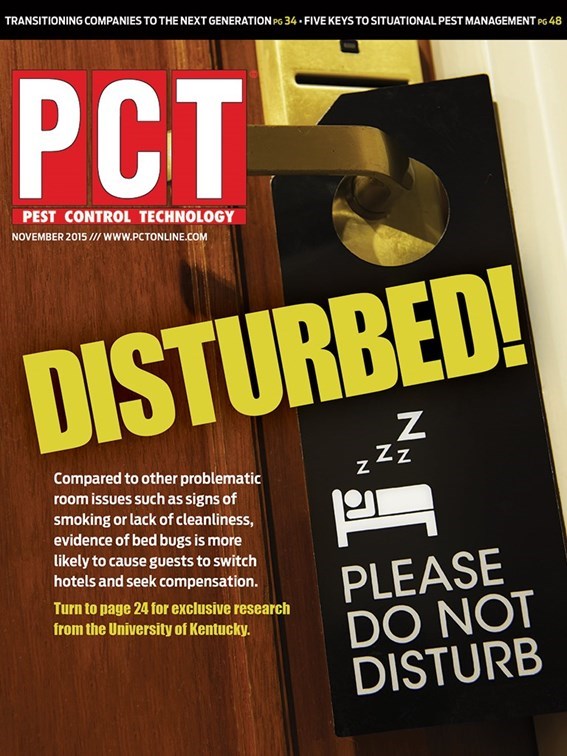
Explore the November 2015 Issue
Check out more from this issue and find you next story to read.
Latest from Pest Control Technology
- Viking Pest Control Organizes a Charity Bike Build for Local Families
- Gaining Control of Structure-Infesting Carpenter Ants
- Big Blue Bug’s Brian Goldman Receives Rhode Island Small Business Person of the Year Award
- UF Researchers Examine How Much Bait it Takes to Eliminate a Subterranean Termite Colony
- Women in Pest Control Group Continues to Grow, Provide Opportunities in the Industry
- NPMA Announces Results of 2024-2025 Board of Directors Election
- Massey Services Acquires Orange Environmental Services
- Hawx Pest Control Wins Bronze Stevie Award for Sustainability
